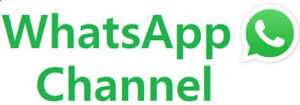New York, 17 December 2023, Scene: A crowded shopping center in the weeks before Christmas. Or a bustling warehouse store. Perhaps a packed airport terminal, commuter train station, or any other location where people gather in large numbers.
Crowds everywhere. Look around, though, and you’ll notice one thing largely missing these days: face masks.
Rare sightings: Yes, there’s the occasional one here and there, but nothing like the first winter holidays of the COVID pandemic three years ago. A contentious American moment of accusations and scorn on both sides of the mask debate.
Masks off: With holiday gatherings and crowded spaces looming, and plenty of unintentional air exchanges, mask-wearing has significantly decreased across the country, even in the face of COVID. The “long tail” of mask mandates feels like a ghost of Christmas past, a fleeting glimpse of what was.
Another layer, another day: But consider it another way: mask-wearing, in America, has become just another thing that just happens. In a country where masks were mostly associated with Halloween or costume parties before the pandemic, this is a new trend that, even if not universally embraced, has become somewhat normalized.
Behavioral shifts: “This is a fascinating part of the pandemic,” says Brooke Tully, a strategist who studies behavior change.
“Home delivery of food and all these kinds of services existed before COVID and were gaining some momentum,” she explains. “But there’s no pre-existing baseline for something like mask-wearing in the U.S. It was entirely novel. So it’s one of those new introductions of behavior and norms.”
A situational shift: Now, the situation is… situational. Like the Pittsburgh Medical Center hospital system’s recent decision to reinstate mask mandates starting Dec. 20 due to a surge in respiratory viruses. And for people like Sally Kiser, 60, of Mooresville, North Carolina, who runs a home health care agency.
“I always carry one with me, because you never know,” she says.
She doesn’t wear it all the time, it depends on the environment, but she will if she feels it’s prudent. “It’s like a new paradigm for the world we live in,” she says.
From peak to dip: It wasn’t long ago that when fear of COVID-19 spiked demand for masks, terms like “N95” entered our vocabulary along with mask mandates. And, later, a strong backlash from those who felt it was government overreach.
Once mandates eased, masks came off, and demand plummeted. So much so that Project N95, a non-profit launched during the pandemic to help people find quality masks, announced earlier this month they would stop sales due to lack of interest.
New normal redefined: Anne Miller, the organization’s executive director, admits she thought widespread mask use would become the rule, not the exception.
“I thought the new normal would be similar to what we see in other cultures and parts of the world — where people just wear masks to be extra careful around others,” she says.
Beyond binaries: But Marcus Kemmelmeyer, a sociology professor at the University of Nevada, Reno, says norms of public safety, or any norm, don’t work that way.





